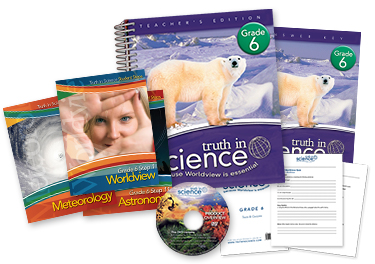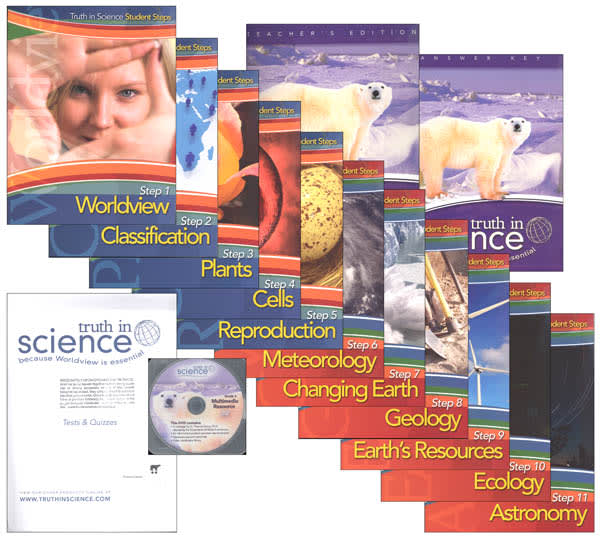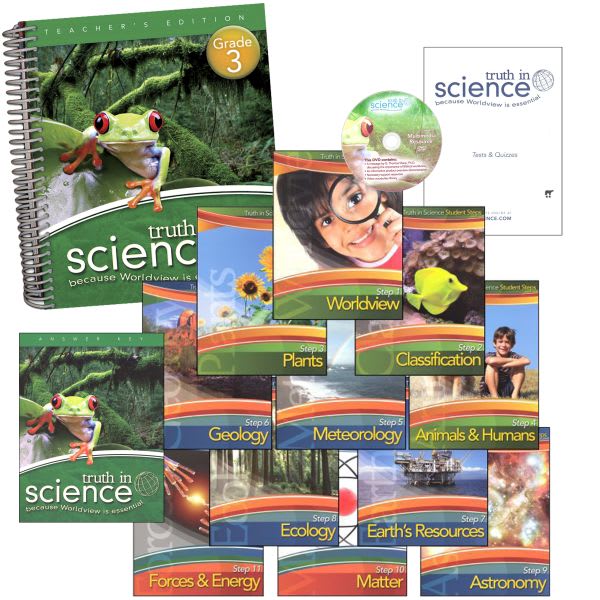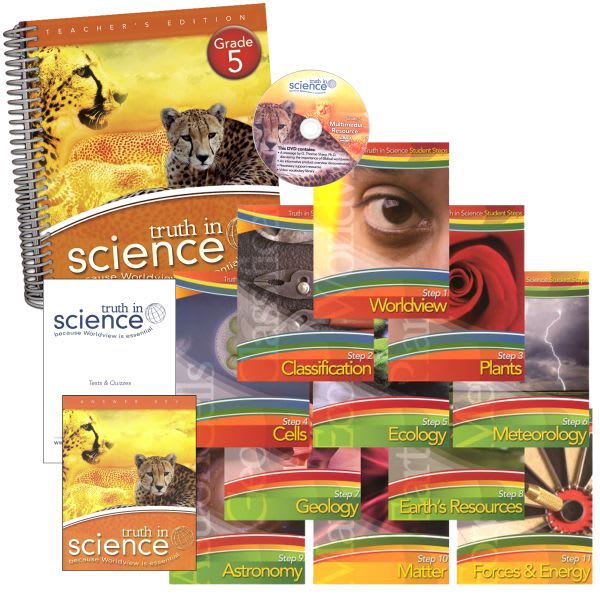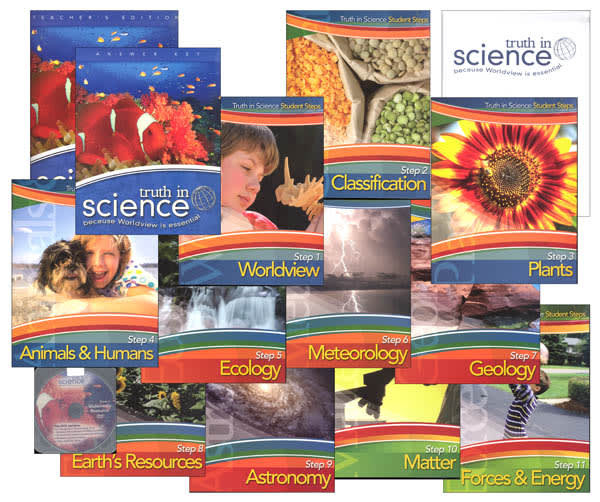While there are a number of science programs available for Christian schools and home education that have a biblical worldview, none that I know of give worldview the priority over science instruction that Truth in Science does. Truth in Science comes from the Creation Truth Foundation and is heavily based on the work of Dr. Henry Morris of the Creation Research Institute, including his sixteen tenets of Biblical and Scientific Creation. These tenets embrace a literal interpretation of Scripture, including belief in a “young earth. ” The curriculum does not support the Intelligent Design movement since ID does not take a position on either the identity of the Designer or the age of the earth.
Courses for grades 3 to 6 are available thus far. I began by reviewing the course for sixth grade. In that course, the first chapter sets the stage with extensive discussion of worldviews and science, explaining that much of modern science is taught based on a non-Christian worldview. That worldview provides a framework that secular scientists use to explain phenomena that might have a very different explanation when examined from a biblical Christian worldview. Much of what is taught in science is really based upon belief and personal interpretation rather than unassailable fact. With this backdrop, the course continues with chapters on classification, plants, cells, reproduction, meteorology, the changing earth, geology, earth’s resources, ecology, and astronomy. Each topic is presented from a clear creationist perspective. For example, instruction on the process of photosynthesis also explains why this complex process could not have evolved.
In a nod to the reality of standardized tests, in most lessons there is a section titled “Science Instruction.” While the first section includes science information in the context of a Christian worldview, the “Science Instruction” section aligns with science standards. In some cases, there is a direct conflict between the standards-based information and what was taught in the earlier part of the lesson, but this is used to highlight worldview conflicts. Each chapter has two tests: one test reflects science from a biblical perspective while the other test focuses more on content that would show up in standardized tests. However, the second test still includes some worldview related questions such as a T/F question, “Evolution is God’s method of creation,” and an essay question: “Tell the story of how the Grand Canyon is a monument to the Genesis Flood.”
The courses are not obviously labeled with grade levels so they might easily be used for younger and older students. Animal symbols indicate grade levels. In the Teacher’s Edition for sixth grade, it says that this level was “designed and written to the published standards for sixth grade science. However the worldview component is age appropriate through age 16.” This means that you could also use the course with older students with a primary goal of teaching worldview, even though it would not be adequate for their science instruction. In fact, some of the information will undoubtedly be new and interesting even to adults.
The courses are beautifully presented with plentiful, full-color illustrations and very attractive layout. However, Truth in Science has chosen an unusual format for the program, partly to help accommodate home educators. Components of the course include a large Teacher’s Edition, a packet of tests, an answer key, an introductory DVD that includes PDF visual aids and other helps, and a set of eleven student “Steps” rather than a textbook. The Steps run about 24 to 30 pages each and can actually serve as a stand-alone curriculum.. While there is a great deal of teaching material and background information in the Teacher’s Edition, the Steps contain the entire lesson (including the “Science Instruction”), illustrations of the critical visual aids (from the DVD), complete instructions for experiments, questions to be answered, science journal pages, review quizzes, and pages for vocabulary activities. It is intended that students write directly in the Steps, so these are consumable worktexts. If you forego the TE, you still need the test packet and the answer key that also has answers to Step questions.
While the publisher says that home-educated students can work independently through the Steps, I think that discussion of much of the course content would be very valuable. Younger children will certainly need more interaction than older. Also, most parents are likely to learn a great deal from this course themselves, so I would recommend working through at least part of the lessons one-on-one or as a family.
Also, parents will need to be involved with the frequent experiments and hands/on activities. These generally use easy-to-find and household items, although one or two specialized items are needed each year (e.g., a butterfly pavilion for grade 3). You can pull this information out of the TE (assuming you even purchase the TE) by going through the outline for each chapter, or you can find a list of materials at the beginning of each chapter in each STEP. Some items are unusual enough that information on where one might buy them would be helpful. For example, a tornado tube is required for chapter 6 of grade six, but I wouldn’t know what that is where to get it. Given that this is a new program, there will likely be a few other annoying items to sort out like this.
Every grade level begins with the first Step dedicated to worldview as described above for grade 6. There is repetition of worldview concepts from year to year, but it allows students to begin at any level and still understand the unusual approach of the program. Life, earth, and physical science topics are taught each year. As with most science programs, some topics such as photosynthesis are repeated every few years but with more sophisticated vocabulary and concepts.
You can purchase a package with all items or you might purchase all except the TE.
All in all, this looks like a very interesting option that should appeal to those who want to teach a biblical Christian worldview supported by sicence instruction with a young-earth perspective.





